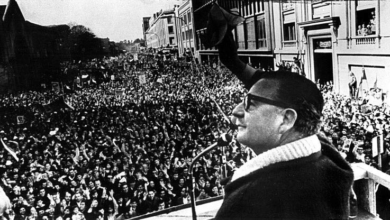A community of Brazilian indigenous people had their village burned to the ground by a wealthy farmer just days after they were evicted by a court order.
 This community of 130 Guarani-Kaiowá in Brazil was evicted from its village, then watched it be burned down to the ground. |
The 130-strong Guarani-Kaiowá community had occupied the land nearly two years earlier, and was forced out on Sept. 11 by a court order. Just three days later, their homes were set on fire. They had hoped to recover the wood and other materials from those homes.
According to a statement from the Indigenist Missionary Council (CIMI), the village residents watched their homes being burned down and then were harassed throughout the night by their aggressors, who kept watch over the burnt village and attempted to intimidate the expelled residents camped on the roadside with their high-beam headlights.
The Federal Public Ministry was alerted as the homes burned, and responded with assurances that it would send police officers. As of the next day, no one had come.
The 35 families had settled there after they were forced to leave another village due to overcrowding. Their settlement in the 420 hectares (1,038 acres) of forested land provided them access to water, wild game, fish and shelter until they were expelled; now, their living conditions are precarious in their makeshift camp next to the highway.
“We do not need much land, only a portion to live on, to plant manioc and potato, bananas for the children”, said Kaiowá Adelaide Albino as quoted by CIMI. “They said that if we did not leave on our own two legs, they would remove us by force, that there would be gunfire.”
According to Survival International, more than 500 Guarani have killed themselves in the past two decades, seeing no way forward without land of their own.
“Immensely powerful economic and political forces that seem to be able to do what they like. They can get these eviction orders and the Guarani can be turfed off their land,” Survival International campaigner Fiona Watson said. (BBC, Sept. 17)
A land drenched in blood
The Guarani-Kaiowá are one of the three subgroups of the Guarani, the largest group of indigenous peoples in Brazil, characterized by cultural ties and a common language. The burned village was built on what had once been a traditional land of the Guarani-Kaiowá, until cattle ranchers drove them out in the 1960s and permanently occupied it. The expelled villagers were seeking legal recognition of their right to the land.
The challenges faced by indigenous peoples are part of the larger land question in Brazil—a conflict that goes back to the arrival of the Portuguese in 1500. The king, eager to see the new land conquered and its wealth exploited, doled out large territories with inheritance rights to colonial administrators who would oversee their settlement. The latifúndios—vast agricultural estates producing primarily for export—began spreading throughout the land soon afterward.
The process required the clearing of vast lands and, most importantly, the expulsion of its native peoples. Much like in the United States, this was achieved through a campaign of violent terror. The indigenous population in Brazil is estimated to have been around 5 million, comprising more than 200 tribes, when the Portuguese first arrived. According to the Brazilian Institute of Geography and Statistics, their population was down to 519,000 in 2006.
The terror continues to this day. Valmireide Zoromará, an indigenous leader, was fatally shot five times on Jan. 9. She had been an organizer in a fierce struggle to keep possession of a plot of land donated to her community, which had been invaded by local farmers. On Jan. 21, Yekuana Luiz Vicente Carton was shot in the head and killed for refusing to transport miners into indigenous lands. In 2007 alone, CIMI registered 76 assassinations of indigenous persons.
Fighting back
Indigenous peoples are not the only ones caught up in the life-and-death struggle for land. Brazil has an estimated 4.5 million landless families, according to the Landless Workers’ Movement (MST). Faced with the insecurities of the seasonal agrarian economy, they live a life of destitution.
A dismal 1 percent of the farms comprise 45 percent of the country’s arable land, while 90 percent of the farms comprise only 20 percent of the land. The MST contends that, by simply redistributing the land held by the top 1 percent of largest farms, all landless families could have a piece of land where they could make a living.
The MST is the largest of a number of organizations of landless workers that have sought the implementation of the country’s agrarian reform law by occupying farmlands, primarily idle plots. Farmers have responded by organizing armed militias and keeping local authorities and politicians in their pockets to ensure impunity.
MST organizers have stood in solidarity with the plight of displaced indigenous peoples. In February 2007, the MST launched an effort to collect 100,000 signatures to pressure the Ministry of Justice to take action against Brazilian forestry corporation Aracruz Celulose, which illegally appropriated 18,000 hectares (almost 45,000 acres) of indigenous lands in the 1970s. The legal recognition of the right of indigenous peoples to the land came in August 2007—the product of a fierce struggle.
There is no shortage of land in Brazil. The extreme poverty that affects millions of poor farmers and indigenous peoples there and elsewhere in Latin America could only exist under an economic system where private property is sacred and inviolable, and wealth rests in the hands of a tiny elite. Only by casting off these outmoded forms of property can these inequalities be tackled.






